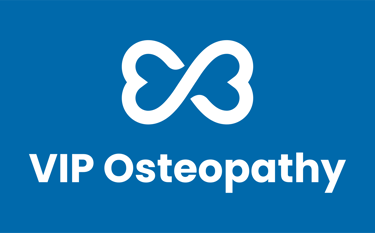Chronic Pain & Fibromyalgia
Understanding the Why — and Finding Your Way Forward
VIP Osteopathy - Keilor
3 min read
Tired, achy, foggy, and over it? If you’re living with persistent pain that doesn’t seem to have a clear cause — and it’s affecting your energy, sleep, and ability to keep up with life then you’re not alone. Chronic pain and conditions like fibromyalgia may look invisible from the outside, but on the inside they’re very real and disruptive.
The good news? There’s more support available than most people realise, and it doesn’t start with “just push through it.”
What Is Chronic Pain and Fibromyalgia?
Chronic pain is pain that sticks around for longer than three months and is often without any obvious injury or ongoing tissue damage. Sometimes the pain may begin after an injury that didn’t fully settle; other times, there’s no clear trigger at all. This doesn’t mean the pain isn’t real, it means that the nervous system has become more sensitive over time. It’s a bit like an alarm system that keeps going off, even when there’s no fire.
Fibromyalgia is a specific chronic pain condition that also brings widespread body aches, fatigue, poor sleep, and something called “fibro fog” — where thinking clearly or remembering things feels harder than it should. It typically affects more women than men, often starts in middle adulthood, and is driven by a combination of influences unique to each individual.
We now understand that fibromyalgia and many other types of chronic pain involve the brain and nervous system being on high alert. That “protective alarm” that is meant to warn us of danger gets stuck on high volume. And when your system is constantly in defence mode, everything from bright lights to a bump in stress can make the symptoms flare.
But here’s the key: this is something your body can adapt and respond to as your body and brain are capable of change. With the right support, your body can learn to turn the volume down again.
How We Can Work Together
Patients living with chronic pain often feel dismissed or misunderstood. That’s why we take time to really listen to your story, your patterns, your good days and bad, because chronic pain is more than just about what shows up on a scan.
Your care is not templated and is tailored to you and your needs. Treatment may include hands-on osteopathic techniques to reduce tension and discomfort, gentle movement retraining to reconnect with your body, and strategies designed to help calm your nervous system. This approach is especially helpful when pain has lingered, flared, or stopped making sense.
The goal isn’t to fix you, but to guide your system back to a place of safety and ease.
Together, we’ll work toward:
Soothing your body without flaring it up
Improving how you move and rest, without pressure to “just push through”
Rebuilding trust in your body, so movement feels safe again
Your plan will be flexible, collaborative, and focused on small, meaningful wins. That could include:
Gentle, paced movement that calms your system and restores capacity — think short walks, supported strength work, or mobility that feels good
Sleep, stress, and energy guidance, because rest and rhythm are vital when your system’s on high alert
Flare-up strategies, so tough days don’t derail you — and you feel more in control, even when things shift
Clear education and steady reassurance — because the more you understand what’s happening, the less fear and confusion pain can cause
We’re not chasing perfect. We’re creating space for progress — on your terms.
What You Can Start Doing Now
Move gently, often. Think low-impact, low-pressure movement like walking, swimming, or yoga, that keeps your system ticking without draining your energy.
Prioritise rest, but not total stillness. Naps and quiet time may help, but long stretches of inactivity can often stiffen things up. Try balancing activity with micro-breaks.
Start a “flare-up toolkit” that you may use when you feel the pain come on.That could include heat packs, calming breathwork, a short walk outside, a gentle stretch, or simply knowing it’s okay to slow down.
Keep a symptom journal. Note patterns with sleep, stress, weather, or activity. It can help you feel more in control and give us great clues to work with.
Practice self-compassion over perfection. You’re not lazy or dramatic, your nervous system is just working overtime. Kindness is medicine here.
If you’ve been stuck in the cycle of “nothing seems to help”, know that it is never too late to try a new approach. At VIP Osteopathy in Keilor, we are here to help you find a new path, one that’s right for you.


Contact us
Address: Consulting out of The Sports Recovery Hub
767 Old Calder Highway, Keilor, VIC, 3036
Telephone: 0476 807 144
Email: hello@viposteopathy.com.au
© 2025. All rights reserved.


